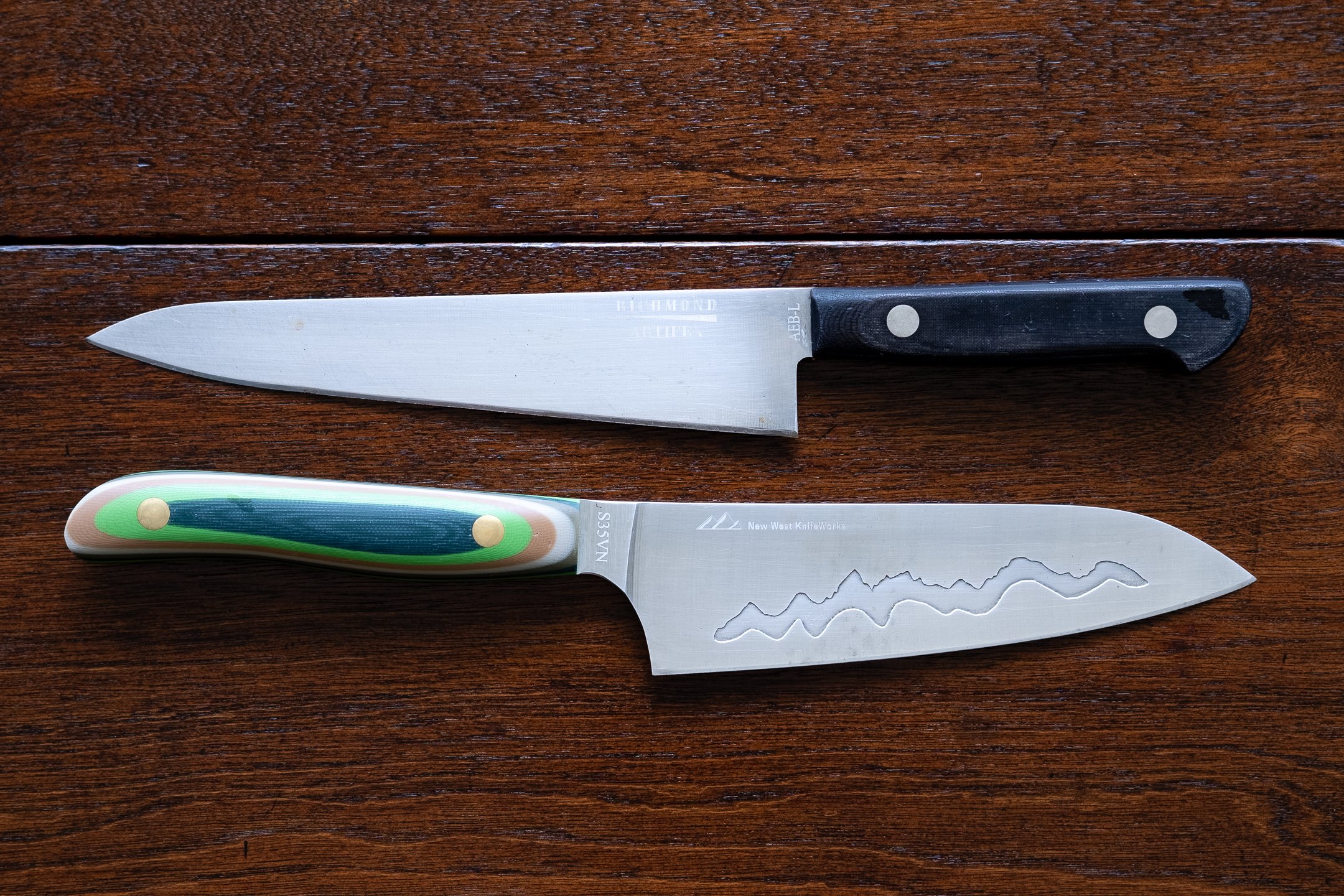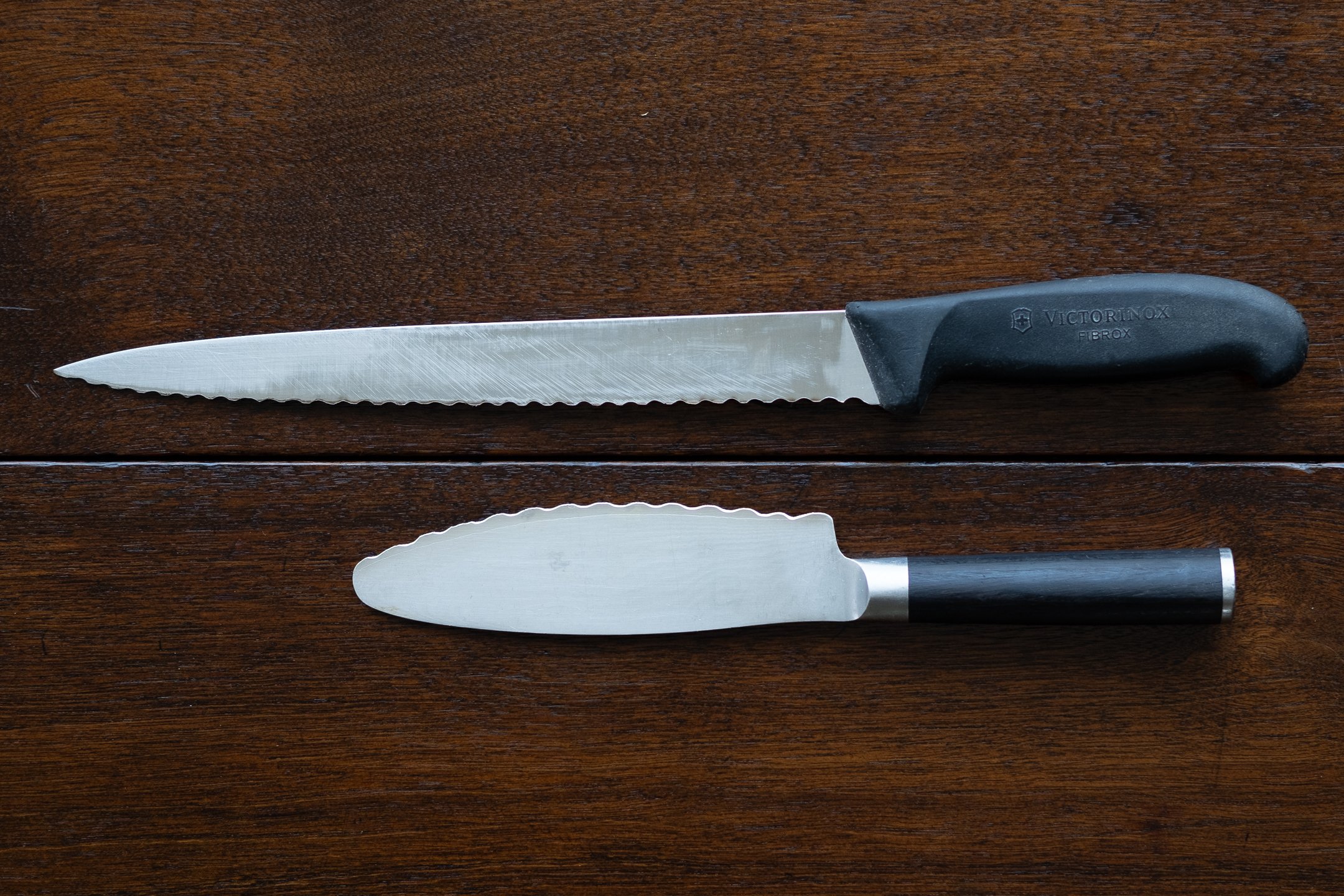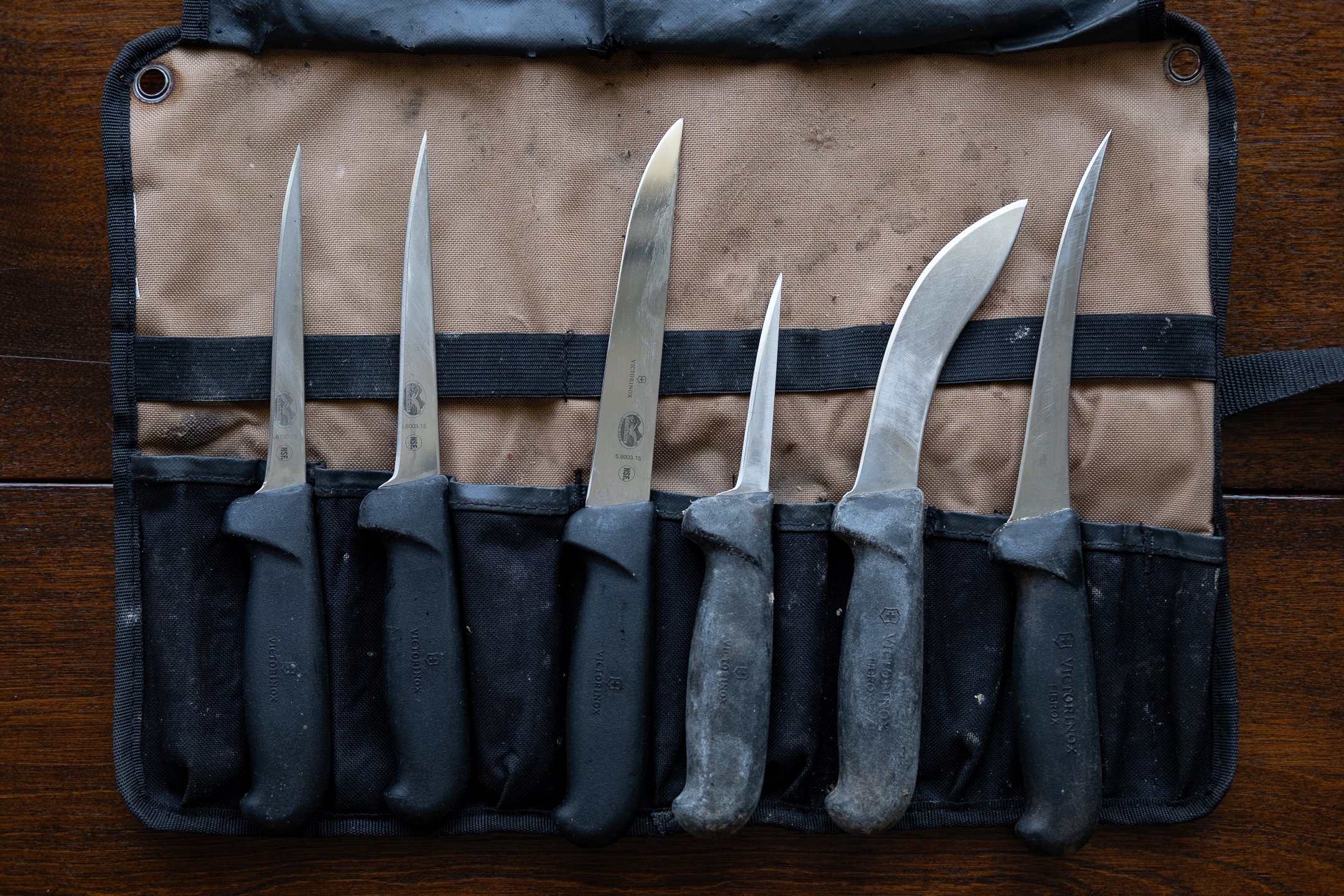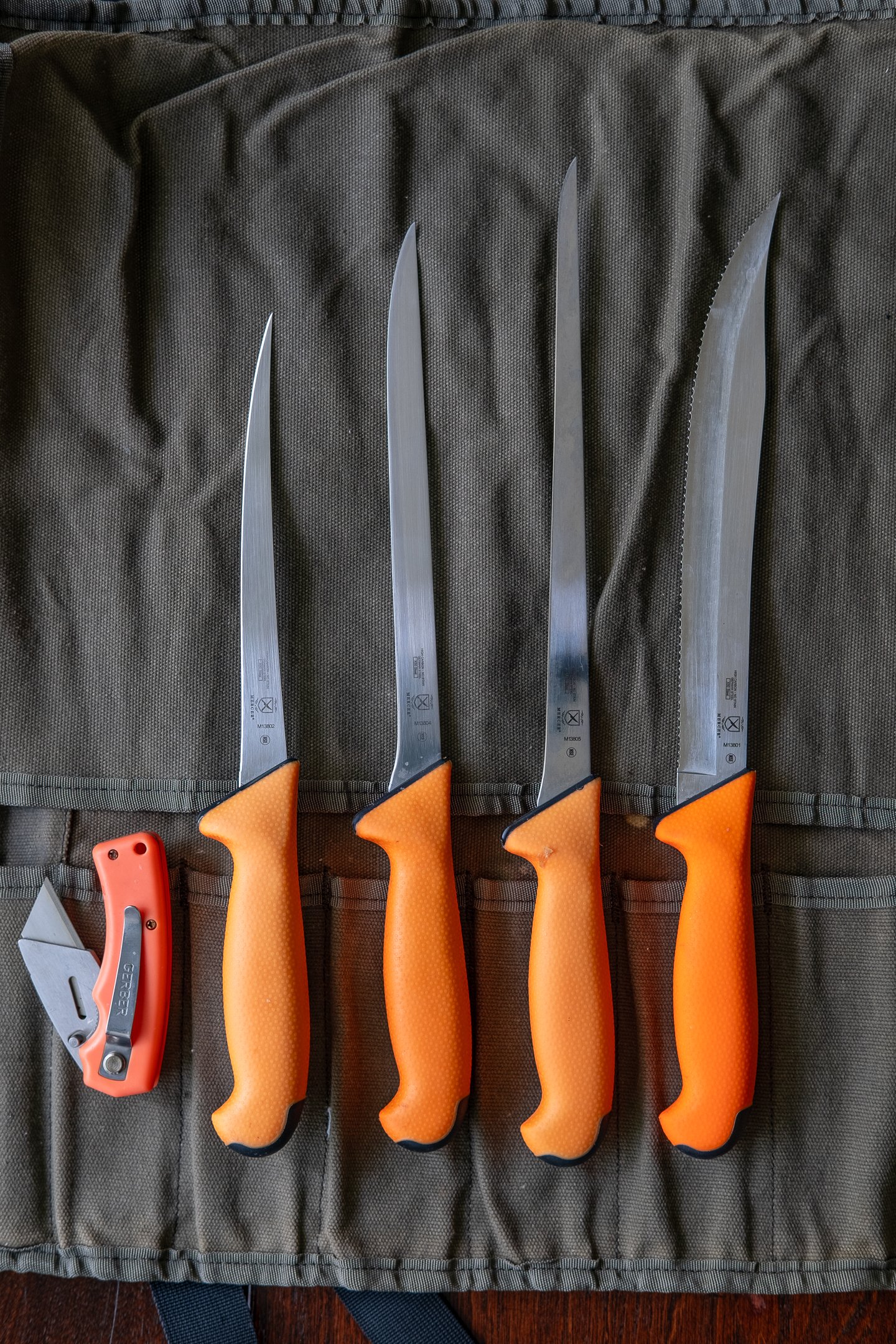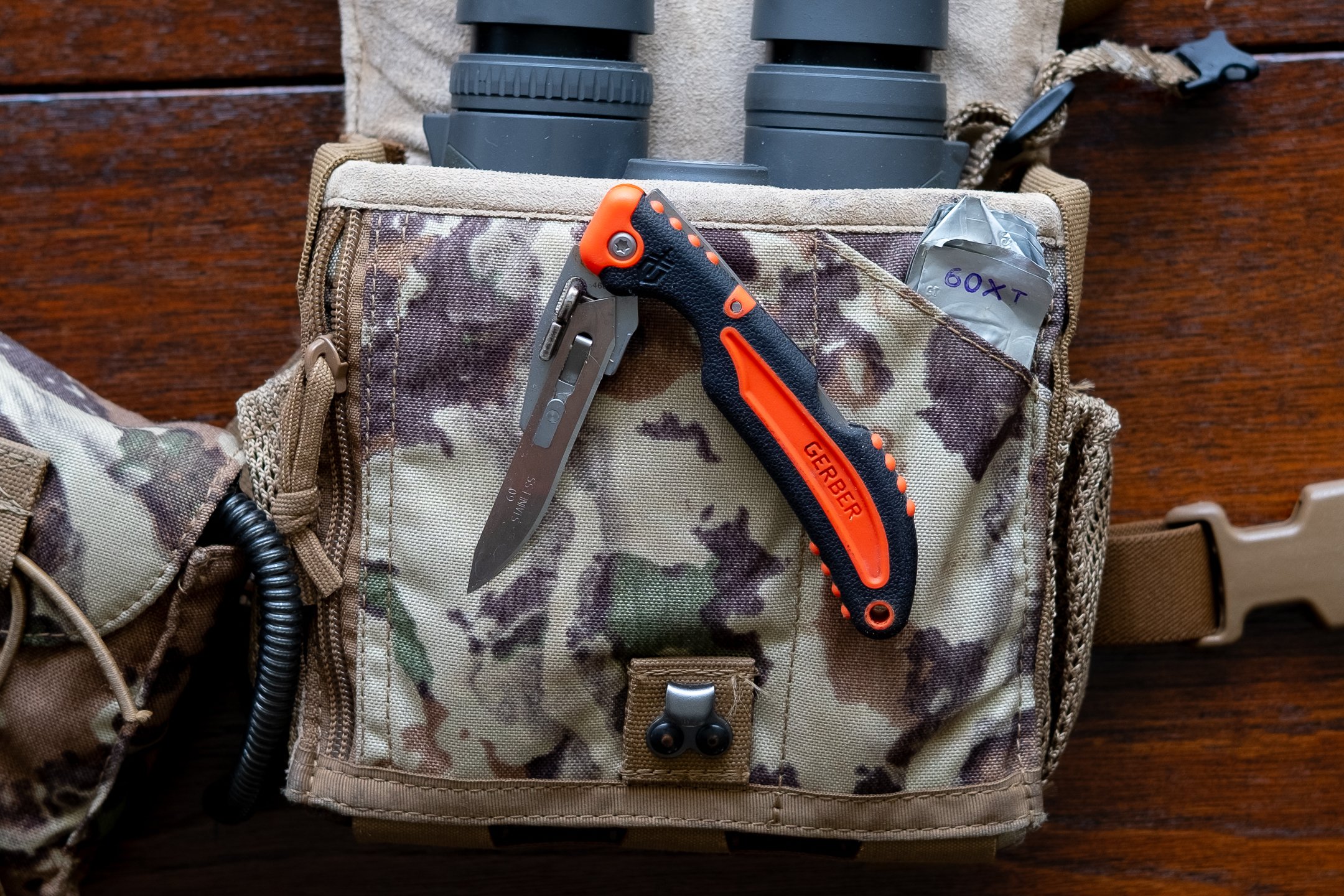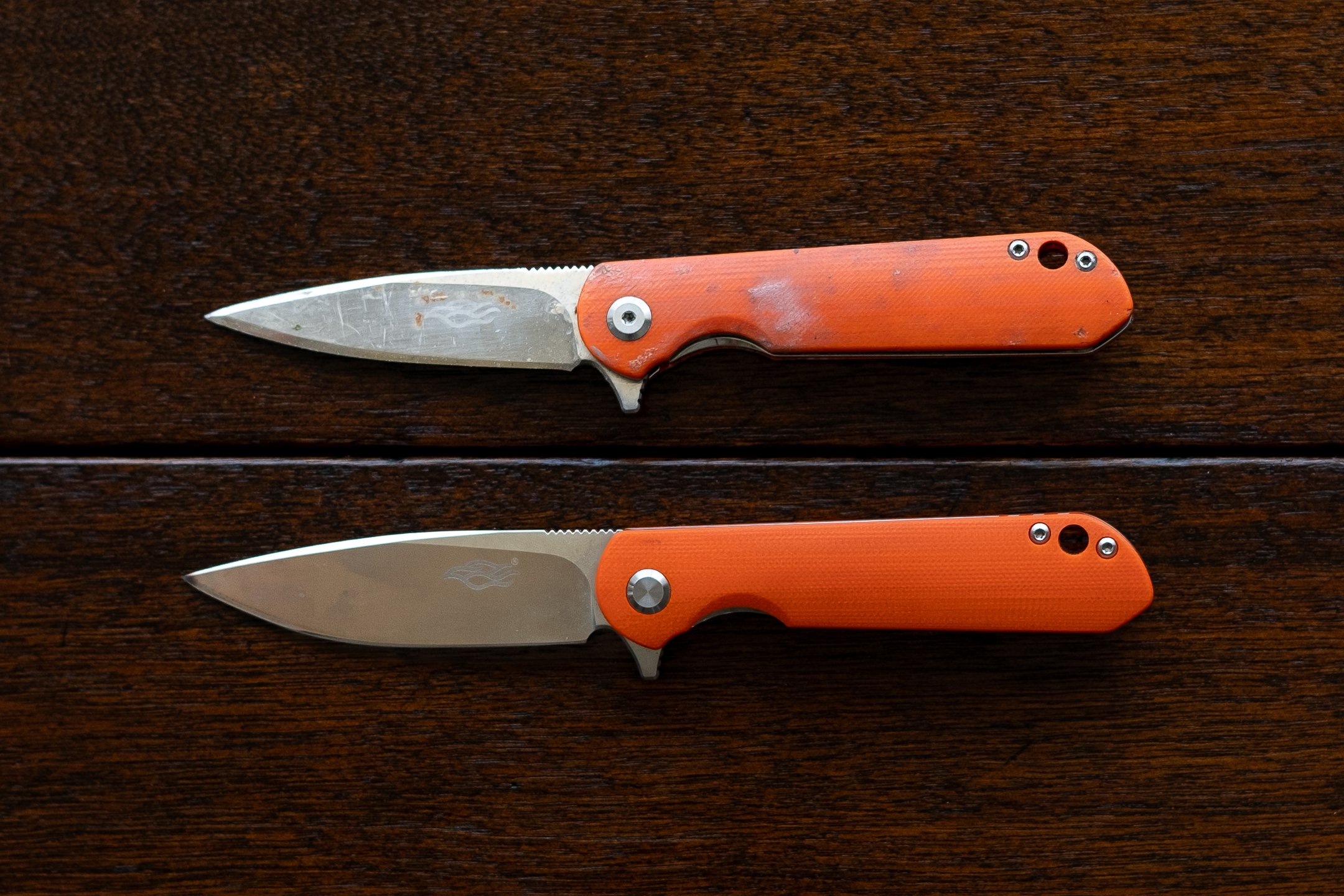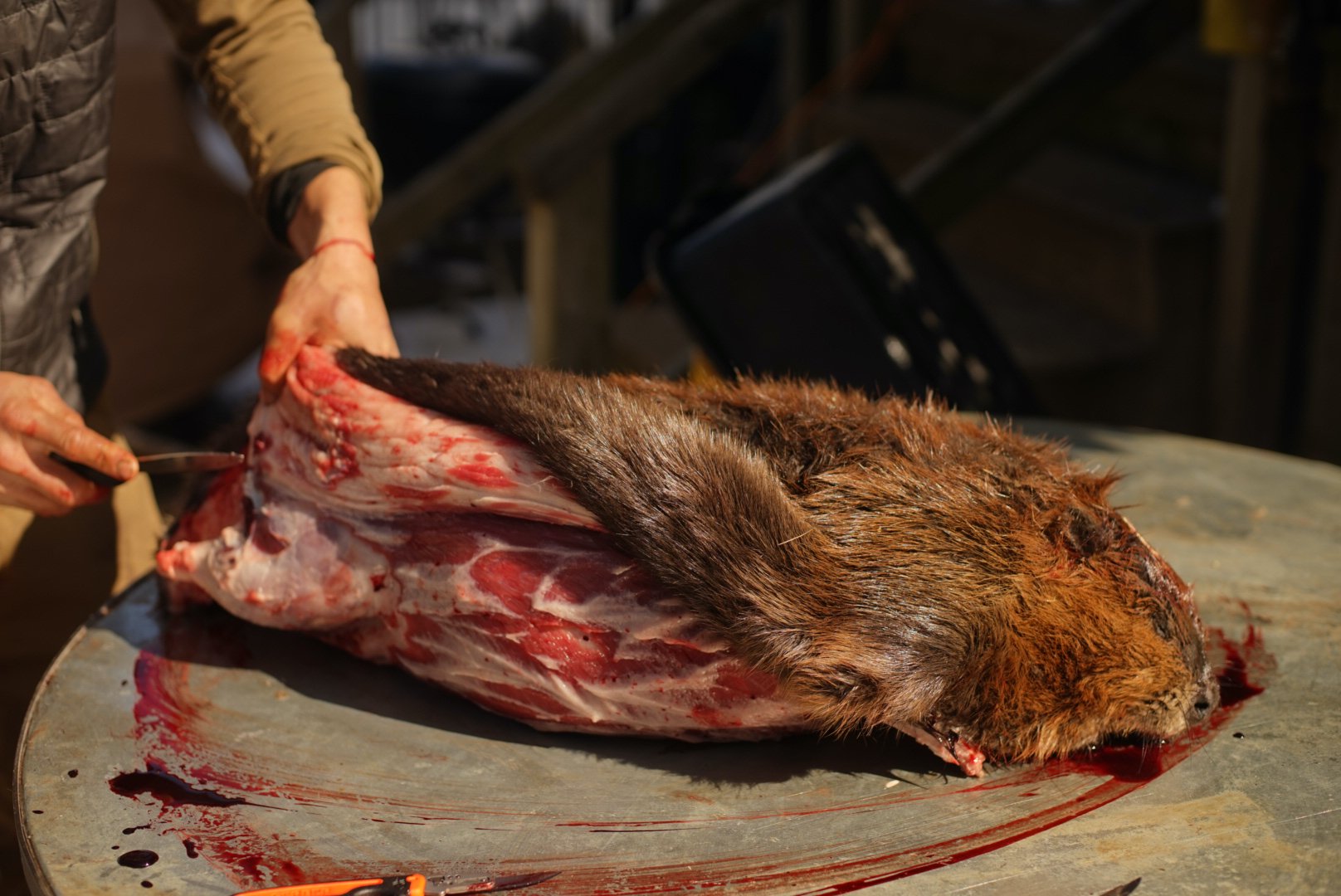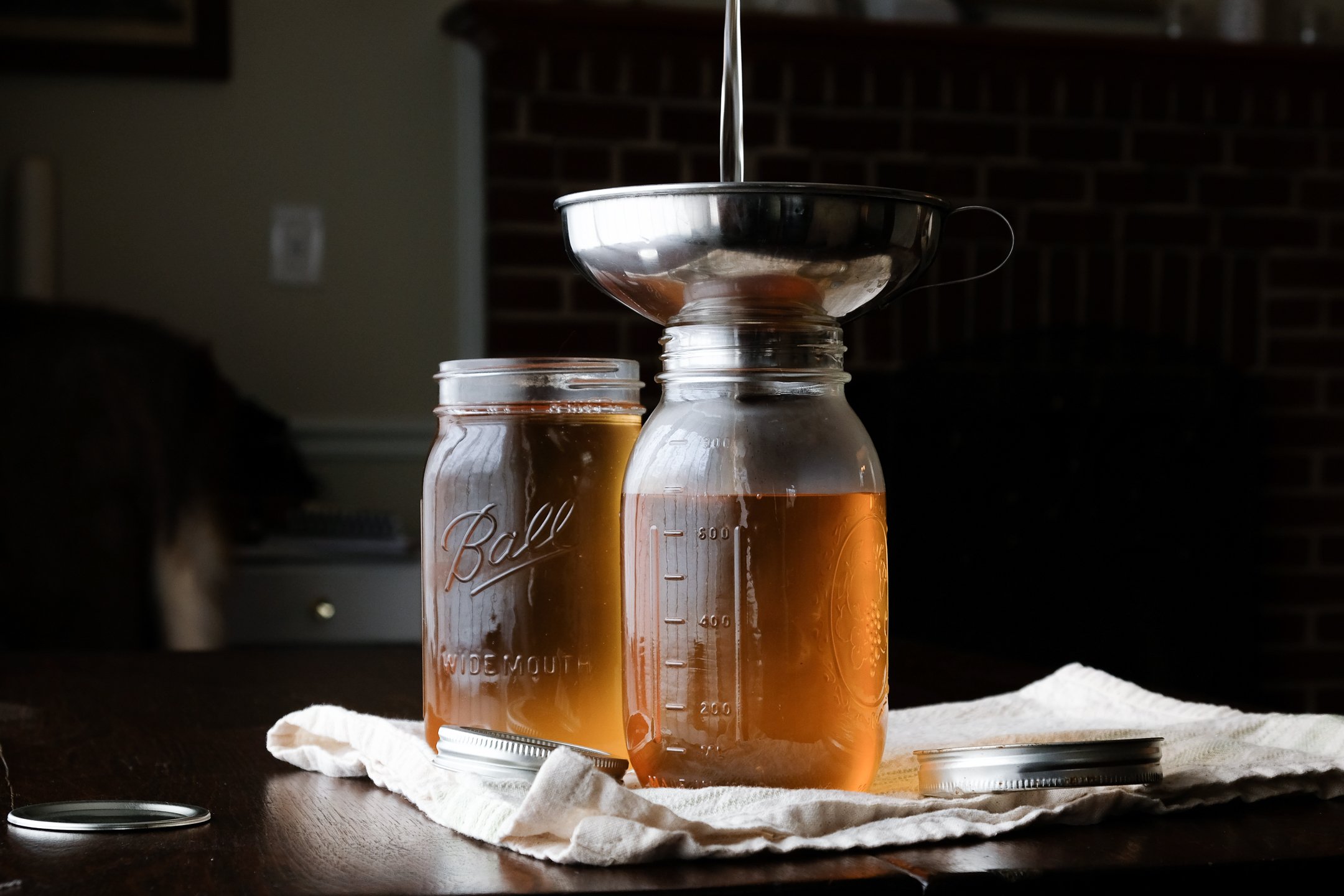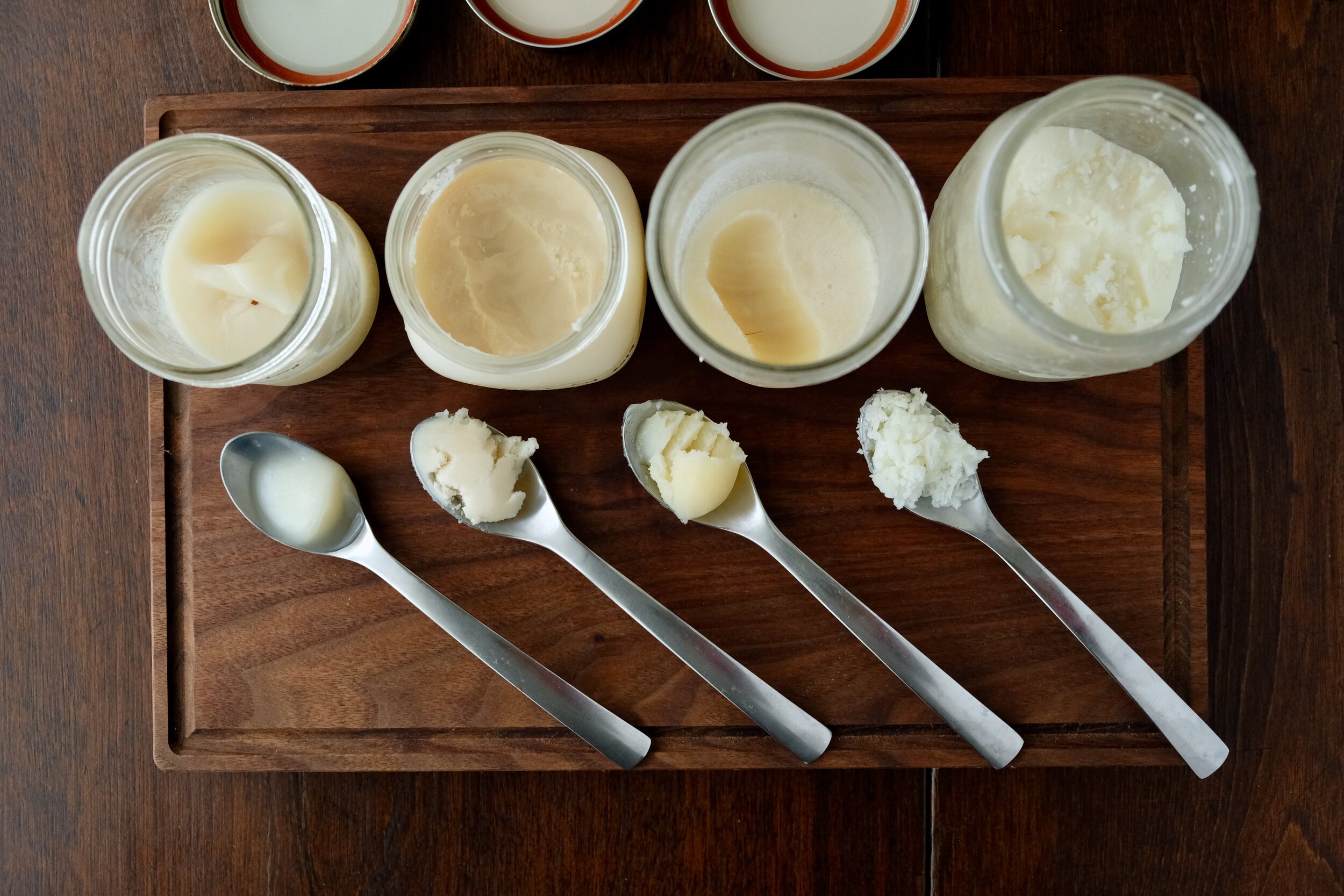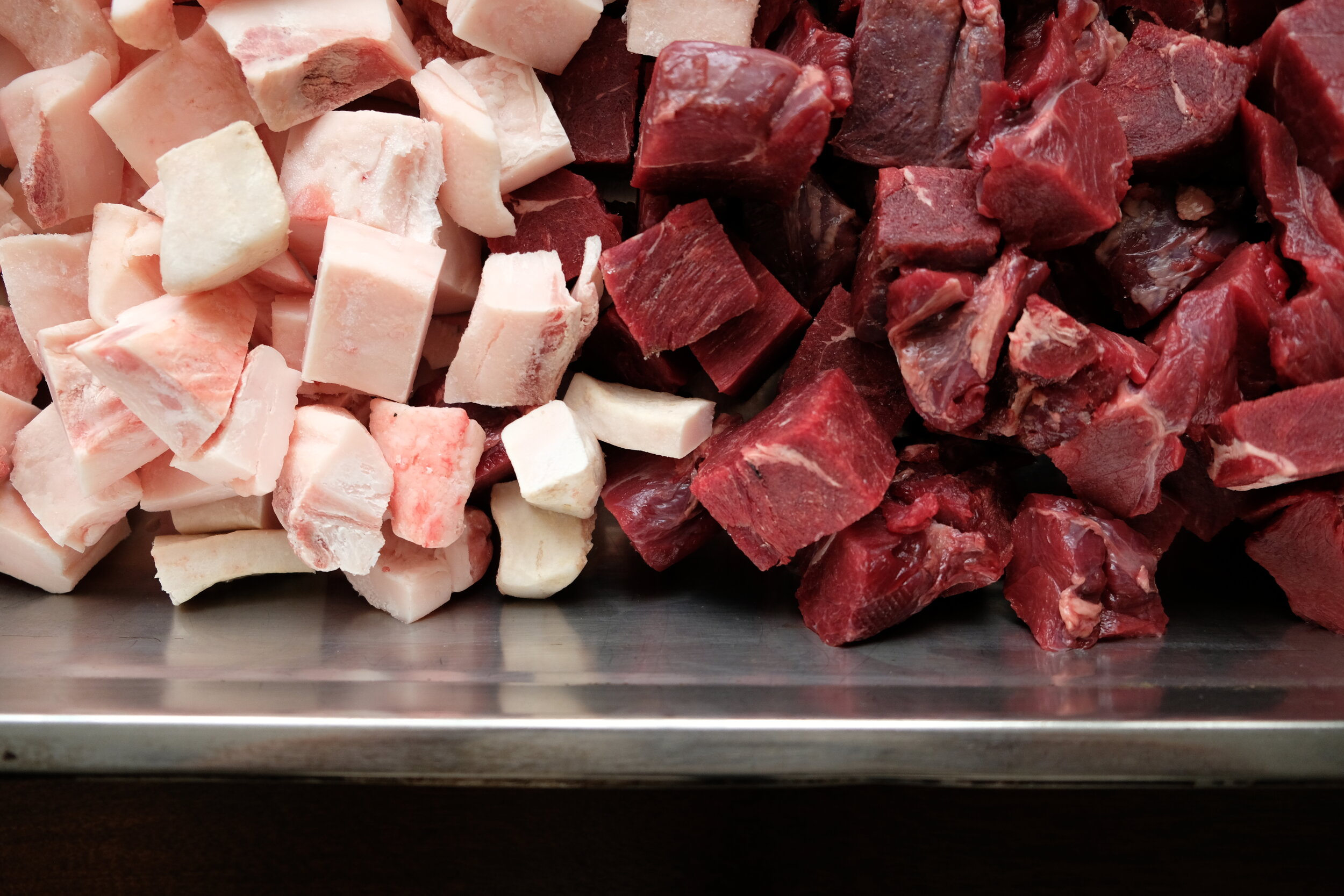The knives I use- the best knives for kitchen, field, fish and butchering

The best knives for kitchen, field, fish, and butchering
I own a lot of sharp things. From home renovations, to processing beef, hogs, fish and wild game, I spend a lot of time with a sharp object in my hands. I get asked for my opinion on knives a lot, more than any other question. I usually respond with “it depends”, and go on a rant about how knowing how to properly sharpen a knife is more important than the knife itself.
While I maintain that a knife is basically useless if you don't know how to sharpen it (read more on the importance of sharpening knives here), I have been lucky enough to use a pile of different knives in various styles and price points throughout my personal and professional life. Below is a list of everything I’m currently using in the kitchen and in the field.
Advertising Disclosure:
As an Amazon Associate I may earn from qualifying purchases. With that being said, none of these companies asked or paid me to include their products in this article. These are knives I use, abuse, and honestly feel good recommending.
What makes a good knife
Just like any other tool, knives serve different purposes. Big, small, stiff, flexible, high carbon, stainless, etc. The characteristics of a knife are dependent on the task they are designed for. The shape of a knife will vary depending on what it is meant to do, but for the most part, knives designed to do a particular task will look similar- e.g. most chef knives have the same general shape and length. Popular designs vary, but overall, a boning knife looks like a boning knife.
What varies quite a bit is the type of steel used to make these knives. You basically have sharpness, durability, and corrosion resistance as the main characteristics of knife steel. As a general guideline, it's hard to have a lot of all three characteristics. It’s about finding a balance between the characteristics for the task at hand and to fit your budget.
You can do a deep dive into knife steels here.
My Favorite Kitchen Knives:
Chef knife- your “do everything” blade
If you’re only going to buy one knife for your kitchen, a quality, all purpose ~8 inch chef or santoku knife will be your workhorse knife.
I have dozens of kitchen knives, but for most cutting tasks, I reach for my chef or santoku knife. Both of these knives are hybrid-style kitchen knives. They have thinner blades without a bolster like most eastern knives, which makes them lighter and more nimble. They’re ambidextrous and double beveled, making them easy to sharpen like western knives.
I’ve used these knives to cut vegetables, slice roasts, butcher deer, and fillet fish. They don't shine at delicate work like boning and filleting, but in a pinch, they work fine. These are my cut, chop, mince, slice, and carve knives. The classic “chef shape vs santoku shape” distinction is negligible to me. I can use either for the same tasks. The major difference between these two knives is the steel they are made of, and that is reflected in the price point.
Chef Knives Togo (CKT) - Richmond Artifex II BD1N Gyuto 210mm
I bought the first version of this knife years ago after a few of my more expensive knives got knocked off the counter top by my coworkers and had the tips broken off. I wanted an inexpensive and durable knife that I didn’t have to baby. I thought this knife was going to be mediocre, but instead, it exceeded my expectations.
This knife is easy to sharpen, holds an edge well, and is basically bulletproof. It shows some tiny spots of corrosion if you leave it wet, and it doesn’t hold an edge as long as some of my other knives, but a few touches to the steel and it's back in action. It is a solid all around, work all day knife. It’s boring looking, but that also means it’s less likely going to be stolen by some line cook. Dollar for dollar, this is one of the best knives I have ever bought.
Note: My knife is made with AEB-L steel, vs this newer version which is BD1N. This newer version should have improved corrosion resistance at the cost of toughness, but should be very similar.
New West Knifeworks - 7" Teton Edge Santoku
This knife was gifted to me by a close friend. The S35VN steel is basically magic. It gets scary sharp, holds an edge longer than any other knife I own, is fairly easy to sharpen and is corrosion resistant. It does chip if you're rough with it, but that's one of the trade offs that you have to deal with if you want a knife that gets this sharp.
If you want all the best characteristics of a knife, you end up paying for it, and this is an example of that. Nearly 4 times the cost of my chef knife, this is where the concept of diminishing returns really starts to show. Is this knife 4 times nicer than my go to chef knife? No, but you can’t use 4 knives at the same time anyways. If you want to treat yourself to a luxury knife, get something similar to this.
Most of the rest of the knives I use in the kitchen overlap with my processing and fillet knives, with the exception of a petty chef knife and serrated/bread knife.
Petty Chef - Utility Knife
Join or Die - Kitchen Cutlass 6” Petty Chef Knife
This is essentially a smaller chef knife, an all around utility blade. This will do just about everything a larger chef knife will do, and because of its smaller stature, it is easier to manipulate when performing more delicate tasks. The longer I have owned this knife, the more I find myself using it. The Nitro-V steel is tough, highly corrosion resistant and sharpens up beautifully. The slightly thicker spine gives this knife a robust yet balanced feel. It’s a smaller knife, but it doesn’t feel flimsy- on the contrary, this knife feels like it's fighting out of its weight class. Brent at Join or Die designed this knife to be used, and it shows. As an added bonus, his knives are handmade by him personally in Richmond, Virginia- each knife is a testament to his craft, and I like that a lot.
Serrated Knife
The Shun sandwich knife is a spatula and bread knife combined- it's a fantastic all around utility/serrated knife. It’ll cut bread and flip a grilled cheese all the same. It’s almost a perfect bread knife, except that it’s a little short for larger loaves. I’ve owned mine for close to 20 years, and I've never sharpened it.
Victorinox - Fibrox Pro Chef's Slicer Serrated Semi-Flexible
The Victorinox serrated slicer is another all-purpose serrated knife that will cut bread as well as slice jerky. I used this knife for years in the restaurant- the long blade is great for slicing and carving. The only downside is once it's dull, it's a pain to sharpen.
Butchering/Processing
Since I left the restaurant industry, I’ve been doing some work on a friend’s beef farm. Killing and processing animals is nothing new to me, but the scale of this work is completely different from cutting up a deer. On any given morning, I will cut and trim thousands of pounds of beef. That is a lot of knife work, and these knives get banged up while scraping meat off bones, cutting through tendons, hide, hair and cartilage.
Rough work like this calls for industrial knives that will take a beating and are easy to sharpen. Nearly every knife in the meathouse is a Victorinox. These knives feature a high level of corrosion resistance with enough carbon for them to take an edge. You can get these knives silly sharp, drop them, run them over with a truck, and soak them in bleach water for a week, and they’ll be no worse for the wear. The softer steel is easy to sharpen, but it does mean you have to sharpen them more often.
I hone my knives every 20 minutes while cutting and give them a proper sharpening at the end of every day.
I use these knives to process beef, hogs, deer, birds, and everything in between. They are inexpensive and purpose built. I use the stiff wide boning, curved boning, curved breaking and beef skinning knife.
Victorinox - Fibrox Pro 6” Extra Wide Boning Knife
Victorinox - Fibrox Pro 6” Curved Boning Knife with Semi-Stiff Blade
In the photo above, you can see the same model of boning knife in 4 stages of its life. From left to right, 2 years old, 1.5 years old, a week old, and over 2 years old (I cut this one down to be used specifically for jointing hooves). The knives to the right are my beef skinner and curved boning knife.
Fish/Filleting Knives
Much like the processing knives I use, my fillet knives get beat up. Scraping knives along bones and cutting through scales puts a hurting on them. On top of that, they’re constantly getting doused in salt water and rolling around in my truck bed.
I currently use Mercer Sport fillet knives. They’re sharp, easy to touch up, have non-slip grips, and good corrosion resistance. They are nimble and well balanced tools. They are my favorite filet knives I have used. I use the narrow 7” and 8” fillet for almost everything that swims, but I'll break out the 9” to skin large fish, and the 9” utility if I have to cut through some thicker ribs or steak a fish.
Mercer Culinary - Mercer Sport Fishing Knife, 7" Narrow Fillet
Mercer Culinary - Mercer Sport Fishing Knife, 8" Fillet
Mercer Culinary - Mercer Sport Fishing Knife, 9" Fillet
Mercer Culinary - Mercer Sport Fishing Knife, 9" Utility Fishing Slicer, Scalloped
Protip: I pack a folding box cutter with my fillet knives on fishing trips. I use it to make initial cuts on thick-skinned fish and to pop through thick ribs. This saves a lot of wear and tear on the fillet knives. The blades will rust but they’re pennies each. I got the idea from watching mates filleting mahi and tuna at a marina.
Field Knife:
Gerber Gear - Vital Pocket Folding
The knife that works best for you in the field will depend a lot on what you are hunting ,and the situations you will be in. The majority of the hunting I do does not require packing in a camp, building a fire or cutting much of anything. Most of the time when I’m deer hunting, the only task I need a knife for is field dressing, and occasionally, skinning. I need less of a bushcraft knife, and more of a scalpel.
I have a Gerber folding Vital scalpel knife stuffed into the front on my bino harness with a few fresh blades. I’ve been using a scalpel style knife for years, and I love them. The Gerber vital locks up solid and has a nice grippy texture to it, ideal for when your hands are covered in blood. This knife is tiny yet sturdy. It’s easy to manipulate between joints and to make blind cuts inside of the animal.
It’s all I need to field dress and skin a deer. The best part- because of its size I always have it on me, and I don’t ever worry about whether or not it's sharp.
Note and tip: The 60A blades are slightly thicker than the 60XT blades, though I don’t really notice a difference between the two performance-wise. You can buy the 60xt blades in bulk and save a lot over the small quantities.
Pocket Knife/EDC Knife:
Photo: a brand new pocket knife vs the one I’ve been using hard for about a year and a half.
Firebird - GANZO Pocket Folding Knife FH41S with D2 Steel
No knife I own gets more abuse than my pocket knife. I carry it everyday, and I have used it to do everything from opening packages, tightening screws, digging holes, scraping paint, and taking apart animals. My prerequisites for a pocket knife are it needs to be small enough to not get in my way, easy to re-edge and sharpen, and cheap enough that if I lose it I won’t be mad.
After losing a few expensive pocket knives, which tend to either get left under a gut pile or catch a ride with a cast net, I decided to buy a pocket knife that I wouldn’t feel bad losing. I found a cheap knife online with similar specs to much more expensive knives and figured, what the hell.
The Firebird GANZO Pocket Folding Knife model FH41S with D2 steel is my favorite pocket knife I have ever owned. It’s small, light weight, and sturdy. D2 steel is a tool steel, which is an inexpensive balance of durability, sharpness, and decent rust resistance. The blade will take an edge well- I have chipped it plenty of times on rocks and cement, but it's easy to fix and sharpen. The blade will show some rust if you dunk it in saltwater and forget to rinse it, but you can just buff that out. The liner lock is sturdy enough and the G10 handles have great texture even when covered in fish blood and slime.
The best part though, is that it’s cheap, so I never hesitate to use it for tasks that will bang it up. This knife has seen a lot of blood, grease, dirt and salt and it hasn't let me down yet. I take the knife apart and give it a deep clean and grease the bearings every few months. The blade is a lot smaller than when it came out of the box, and the bearings aren’t as smooth, but it still works great. I am genuinely surprised it has held up as well as it has.
I have the version with the blaze orange handle, which makes it easier to find when I leave it on the ground. I recently lost my knife and had no idea where to even start looking for it, so I ordered another one. The next time I was mowing the grass, I spotted the orange handle partially covered in overgrown grass. I don’t think I’ll ever go back to earth tone handles on a pocket knife again.
Honing Rods/Steels
I use diamond, steel, and ceramic honing rods. But if I was going to only own one, it would be a ceramic rod. Ceramic rods are great at reshaping an edge and keeping your knife sharp, but they're not as aggressive as a diamond rod, and I prefer the smooth ceramic over the textured steel rods. Honing rods aren’t a replacement for stone or belt sharpeners- they’re a complimentary tool- but every kitchen needs one.
Bonus round- best folding saw:
This may not quite fit the theme, but while we’re talking about sharp things I use a whole lot, my folding saw is one of them. My silky saw is a tool I reach for all the time- brushing up blinds, clearing shooting lanes, and removing limbs from roads. Unlike other folding saws I’ve owned, this thing is a pleasure to use- the teeth don’t bind and it makes easy work of just about anything I put it to.

